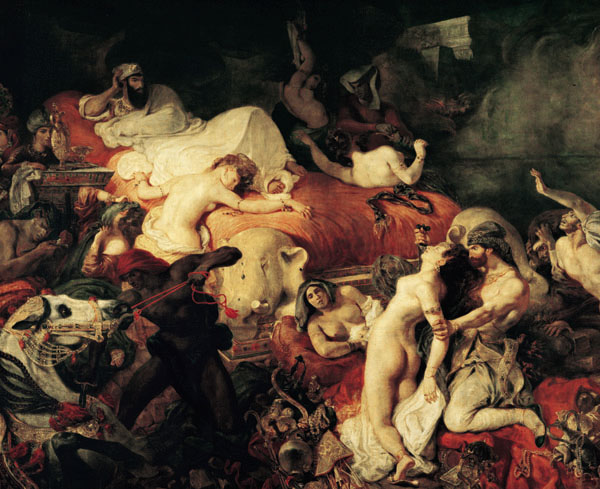Image Details

Erich Lessing/Art Resource, NY
Under Western eyes, Assyrian kings are often imagined as bloodthirsty conquerors or profligate sybarites—or both, as in The Death of Sardanapalus, painted in 1827 by the French artist Eugène Delacroix. According to legend, Sardanapalus was one of the last Assyrian kings, during the time when the capital of Nineveh was under siege by the Medes and the Babylonians. (The actual invasion occurred in 612 B.C.) When Sardanapalus learned that the enemy had breached the city’s walls, the king had his concubines, slaves and horses slaughtered and the royal treasury destroyed—while he presided over this barbaric spectacle reclining on a couch that was to be his funeral pyre. Delacroix’s large treatment of this legend (the painting is about 16 feet wide), now in the Louvre, fuses violent scenes of rapine and murder with images of glittering jewels and sumptuous, flowing tapestries, all rendered in brilliant colors. Curiously, despite the contorted faces and the knife wounds, no one bleeds.
